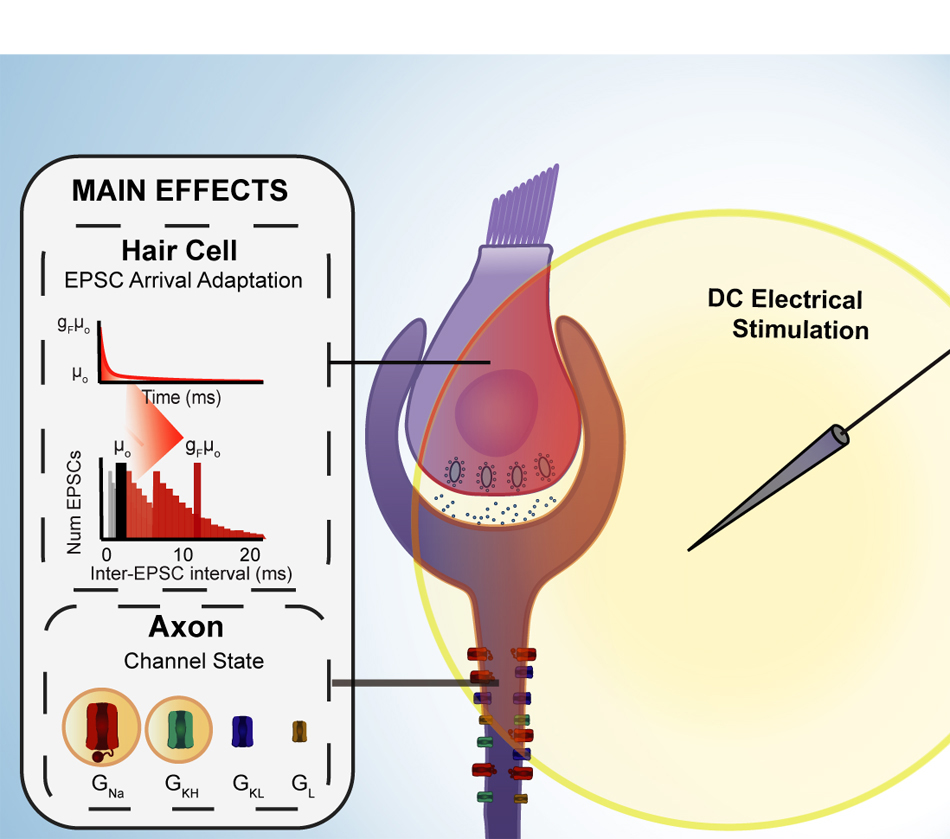The Effects of Direct Current on Axons and Hair Cells
Direct current (DC) stimulation or galvanic stimulation was considered unsafe for long term use in the body due to toxic electrochemical reactions that occur at metal electrodes delivering current for an extended period of time. With safer technologies emerging for using DC stimulation, it is re-emerging as a possibility for treatment. In contrast to the conventional pulsatile neuromodulation that excites neurons, galvanic or direct current stimulation can excite, inhibit, or sensitize neurons. The vestibular system presents an excellent system for studying galvanic neural interface due to the spontaneously firing afferent activity that needs to be either suppressed or excited to convey head motion sensation. We determine the cellular mechanisms underlying the beneficial properties of galvanic vestibular stimulation (GVS) by creating a computational model of the vestibular end organ that elicits all experimentally observed response characteristics to GVS simultaneously. When GVS was modeled to affect the axon alone, the complete experimental data could not be replicated. We found that if GVS affects hair cell vesicle release and axonal excitability simultaneously, our modeling results matched all experimental observations. We conclude that contrary to the conventional belief that GVS affects only axons, the hair cells are likely also affected by this stimulation paradigm.
Steinhardt, C. R., & Fridman, G. Y. (2021). Direct current effects on afferent and hair cell to elicit natural firing patterns. iScience, 24(3), 102205.
